Bones and Blood Lurk Within These Stunning Works of Art
Sculptor Jennifer Trask sees a rich backstory in her materials
Those who encounter a piece by Jennifer Trask are likely first struck by its elegance: a baroque gold-coated necklace or an intricate floral broach. But a closer look reveals much more happening below the gilt surface: antlers woven into the necklace; snake vertebrae used as the “petals” of the broach’s flower, giraffe femurs, chicken ribs, cow and camel bones, even teeth.
Despite her occasional morbid humor—such as calling one of her works of keys made of cast iron, pearls and bone, Skeleton Keys—Trask emphasizes that she does not see death in the remains that she employs, but rather a rich backstory.
Trask uses this dichotomy of nature and artifice, glamour and decay, to explore complex, seemingly contradictory ideas—and create some extraordinarily cool looking sculptures in the process. Her artworks are now on view as part of the exhibition Visions and Revisions: Renwick Invitational 2016 at the Renwick Gallery in Washington, D.C. The works span a 20-year career, and include the 1998 Poison Elixir Bracelet—a gold bracelet of 22-karat capsules containing poinsettia petals and dried blood—and the 2014 Caliper—a turkey wishbone fashioned into a gold-inflected compass.
“Bones are not morbid to me, they represent a life lived,” she says. “There is a history in the remnants of a plant or animal.”
Trask sees her role as drawing out that history buried in the materials, letting the “material itself dictate what it will become.” This is true in a physical sense—how far can she bend a particular horn or how careful must she be to carve antique frame fragments. It depends on the material’s density or grain. But it is true also in her pursuit of the more spiritual aspects of the material, allowing it to form its own shape and following its lead.
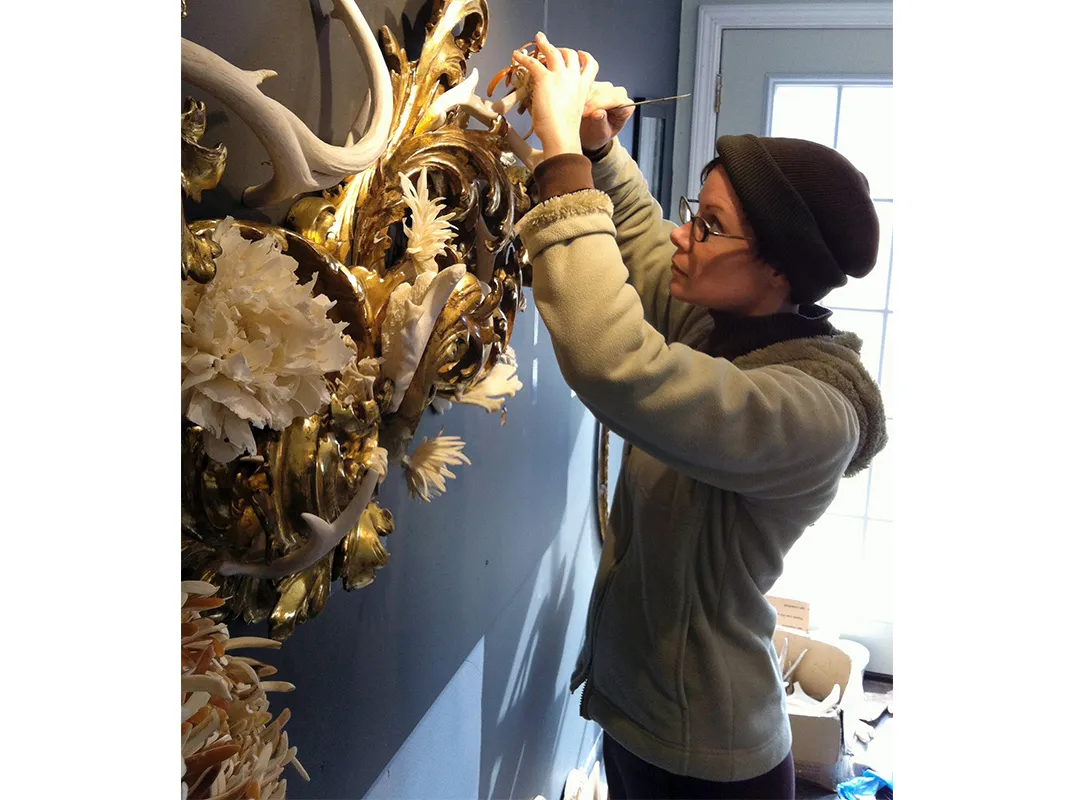
“I wanted it to look as if it had always been that way,” she says. “There has to be authenticity to the process.”
While Trask’s works in the Renwick exhibition are primarily sculptures, she confesses to being “a painter at heart, albeit untrained,” and works to incorporate painting into her sculptures. Trask describes how she gets “lost in the finishing the surfaces; how to make it consistent, where the right amount of transparency or obscurity lies.”
Her work shares an aesthetic with a Victorian cabinet of curiosities, encasing relics and samples of the natural world in intricate, manmade holders. Indeed, her 2007 Wunderkammer Necklace, includes the German word in the title for “cabinets of curiosities” and the silver and gold necklace incorporates shed snakeskin, butterfly wings and glass eyes.
This intertwining of the natural and artificial has interested Trask since her college years. As an undergraduate at the Massachusetts College of Art and Design in Boston, Trask supplemented her coursework in metalsmithing with classes in biology, anthropology and archaeology.
“I have always been drawn to organic materials,” she says.
She made a habit of visiting Harvard University’s Museum of Natural History and Peabody Museum of Archaeology and Ethnology. But while the creatures and specimens on display sparked her interest, so too did the elaborate cases in which they were displayed.
Trask draws on the tradition of vanitas—moralistic paintings that were popular in 16th- and 17th-century Netherlands. She says her interest is now focused on the “symbolism and the ironic nature” of the paintings, and “how the vanitas itself ultimately became another of the luxurious objects they were meant to warn against.”
The botanical aspect of them attracts her as well, and how the portrayals of natural beauty were not actually plausible, since one would never find such a mix of exquisite flowers all in one place or in bloom at the same time.
“Naturally the beauty of these paintings drew me in, the moodiness, a lush dark beauty,” she says.
Ultimately, Trask sees her work as a means to explore the human tendency to cultivate and curate the world around us, in an effort to present a notion of abundance and beauty. She plays with ideas of our self-perceptions of our position in the natural order.
“Did you know trees communicate through their roots?” she asks, wondering if humans aren’t delusional to think they hold the upper hand.
"Visions and Revisions: Renwick Invitational 2016" is on view on the first floor of the Smithsonian American Art Museum's Renwick Gallery through January 8, 2017.
/https://tf-cmsv2-smithsonianmag-media.s3.amazonaws.com/accounts/headshot/Alex_Palmer_lowres.jpg)
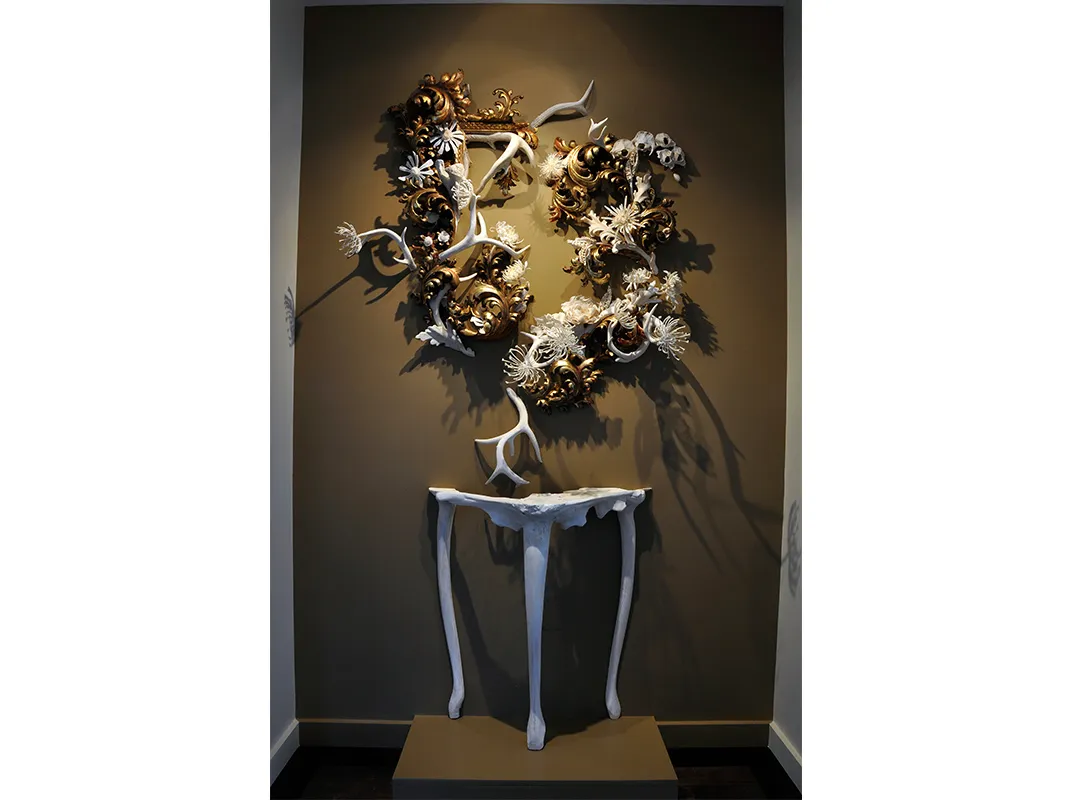
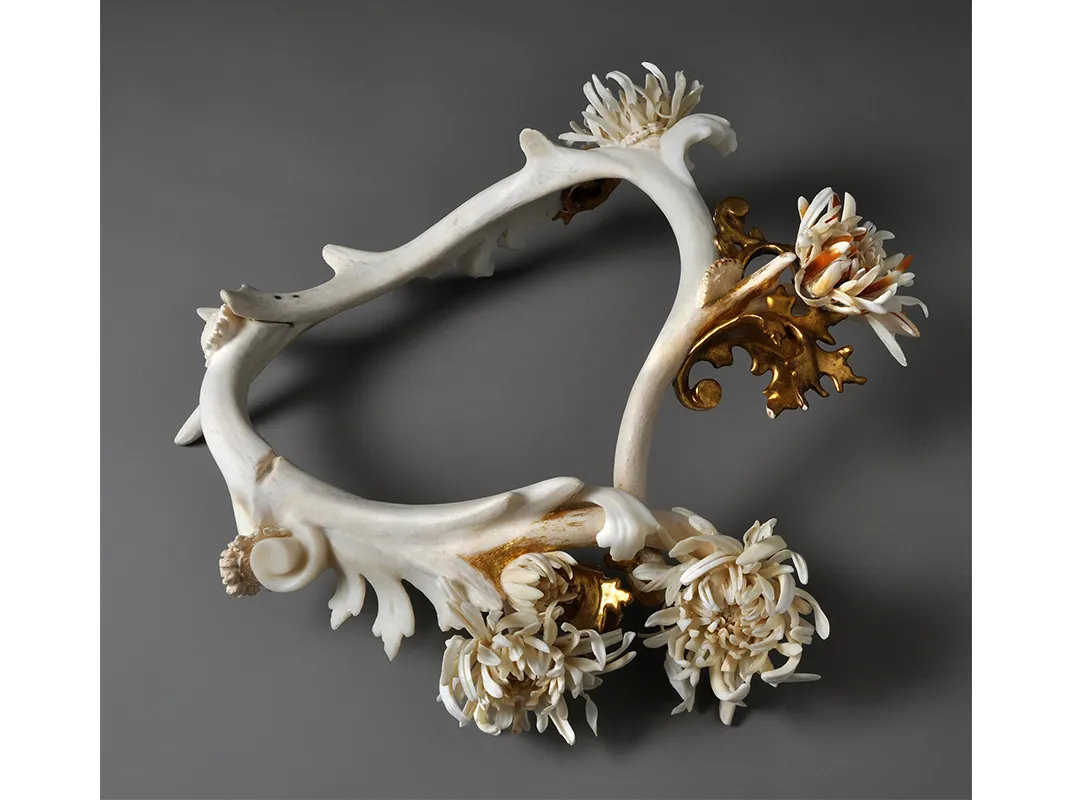
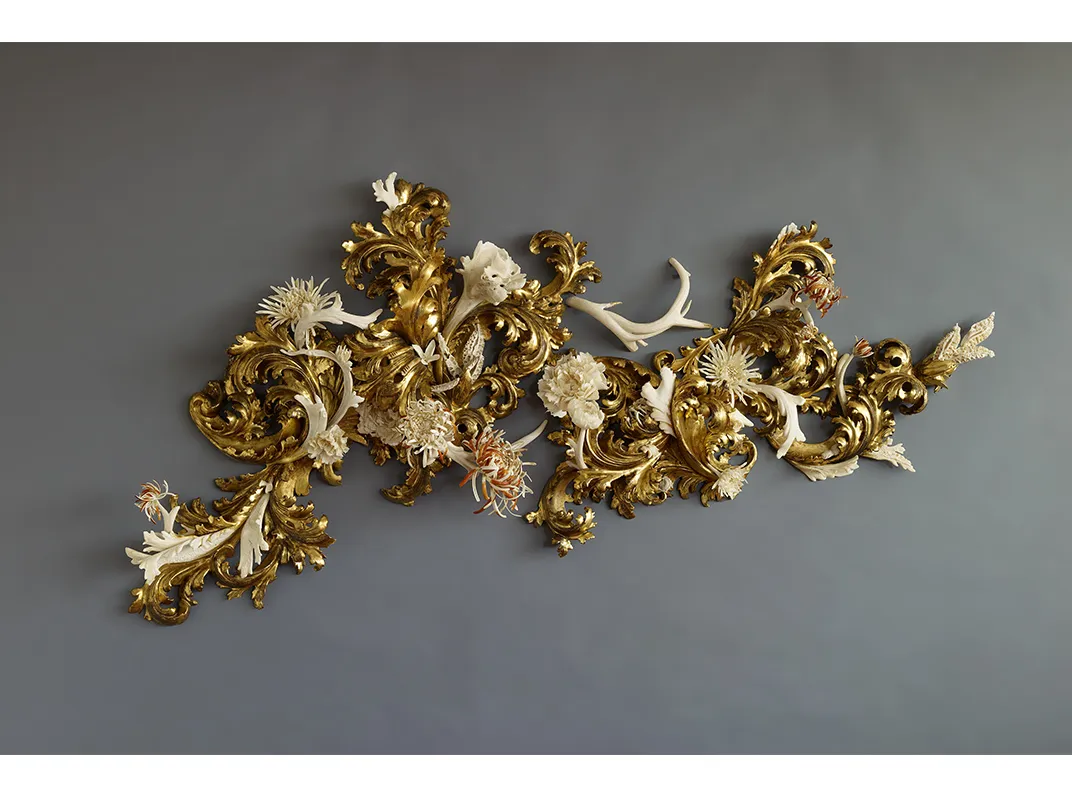
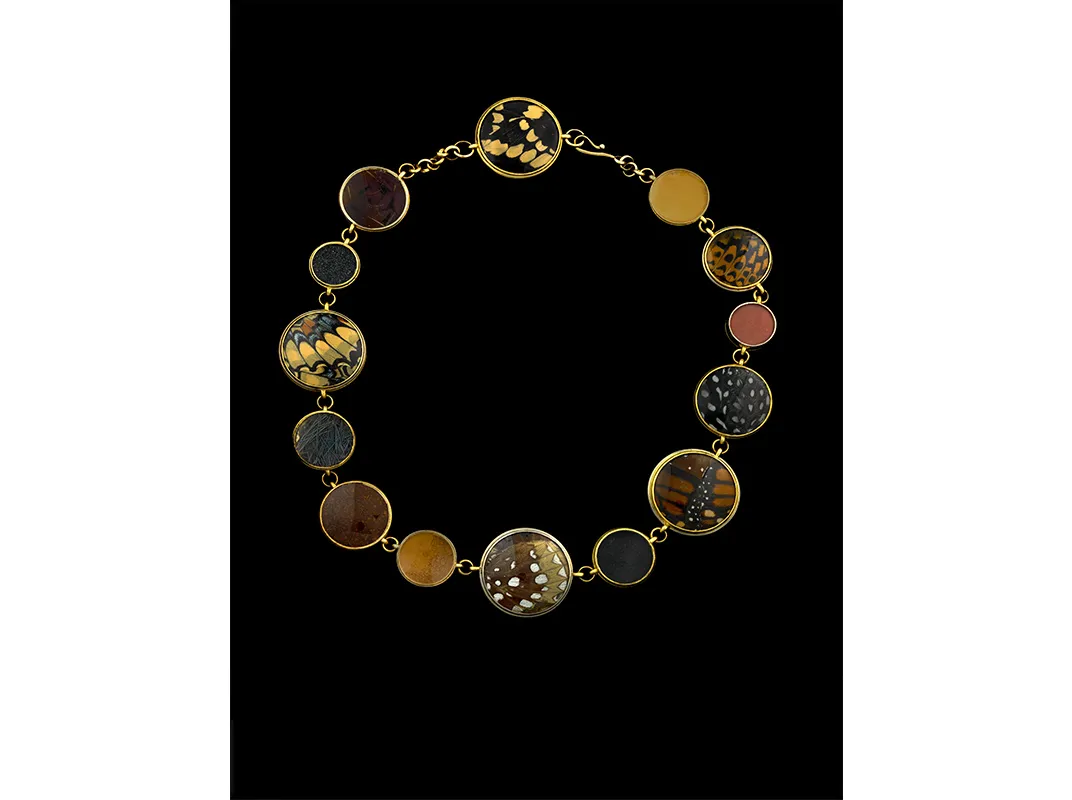
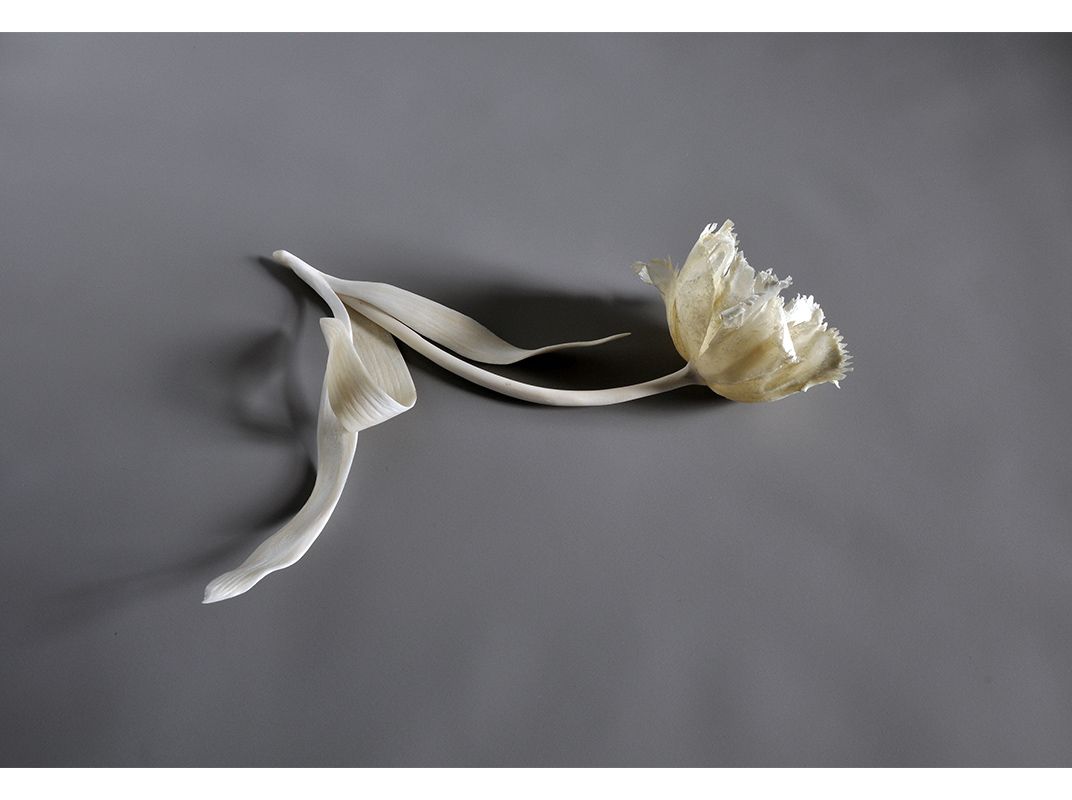
/https://tf-cmsv2-smithsonianmag-media.s3.amazonaws.com/accounts/headshot/Alex_Palmer_lowres.jpg)